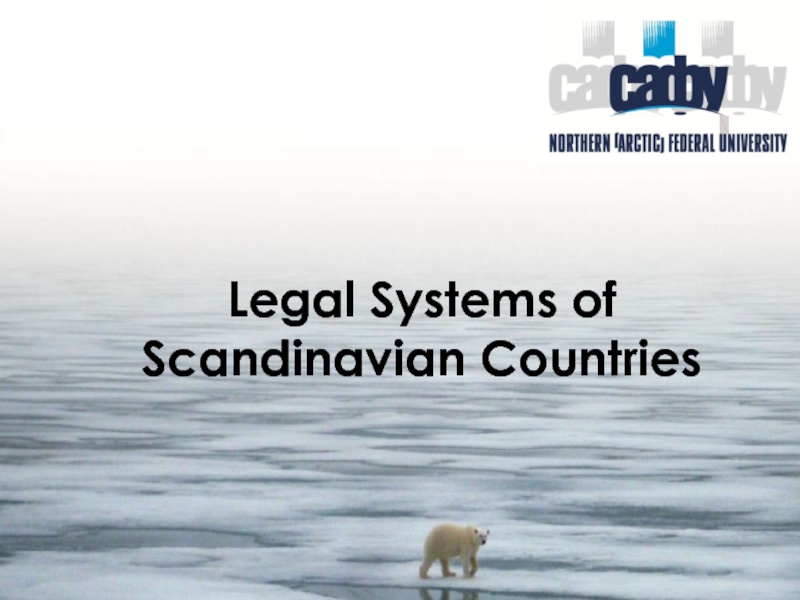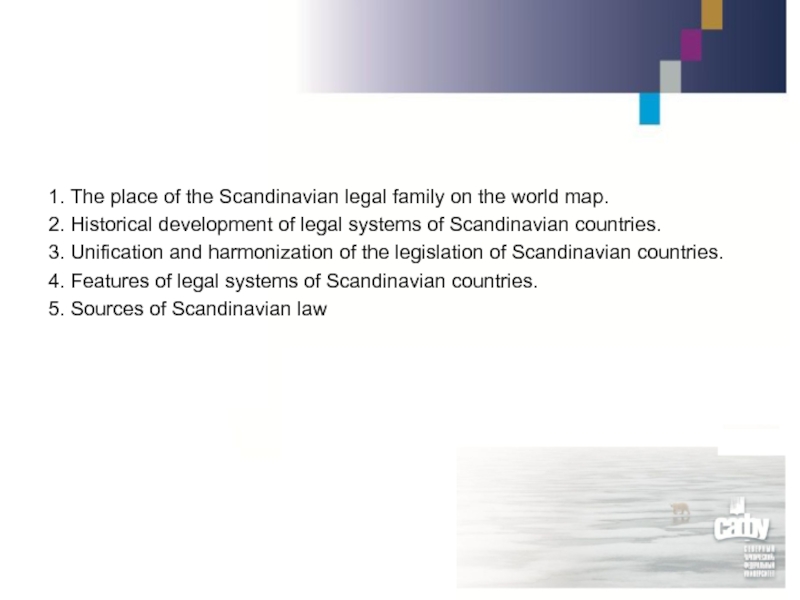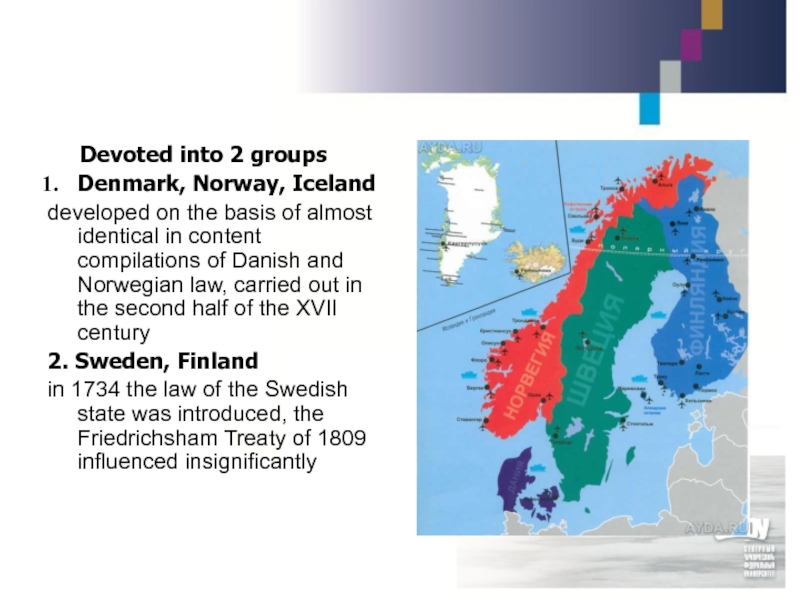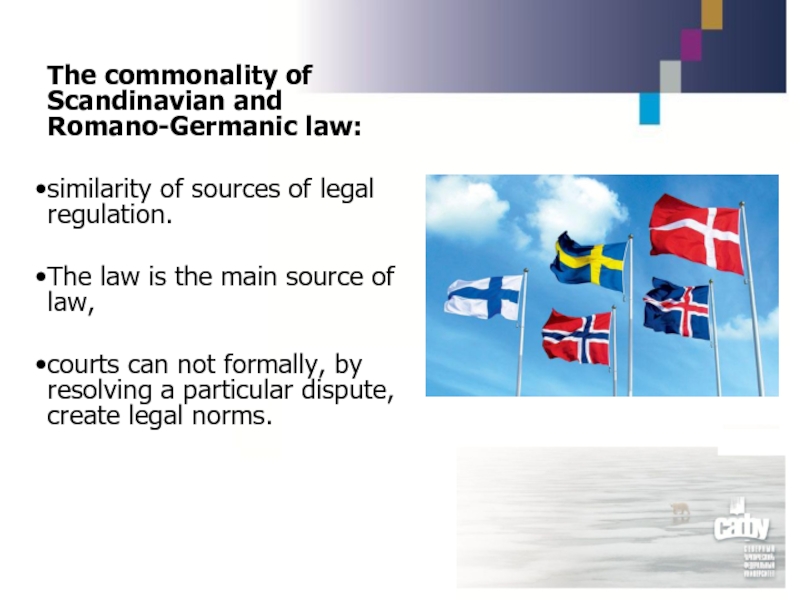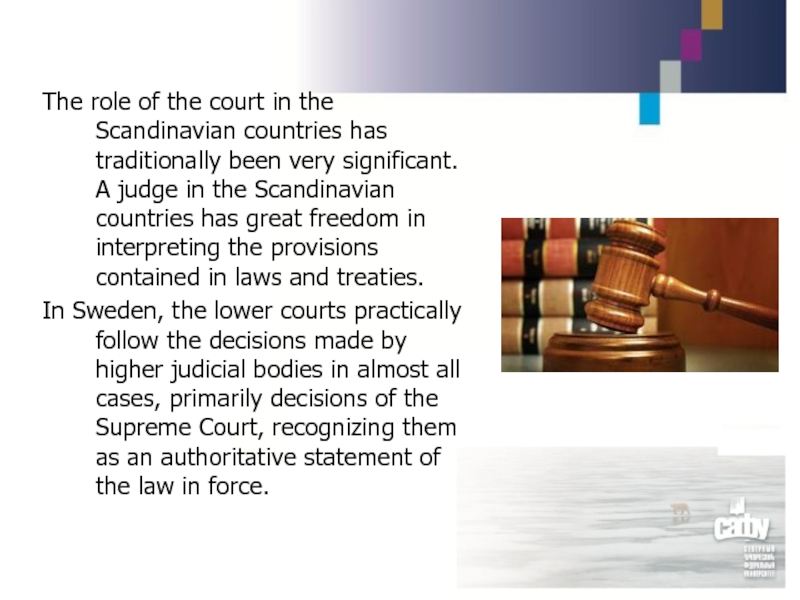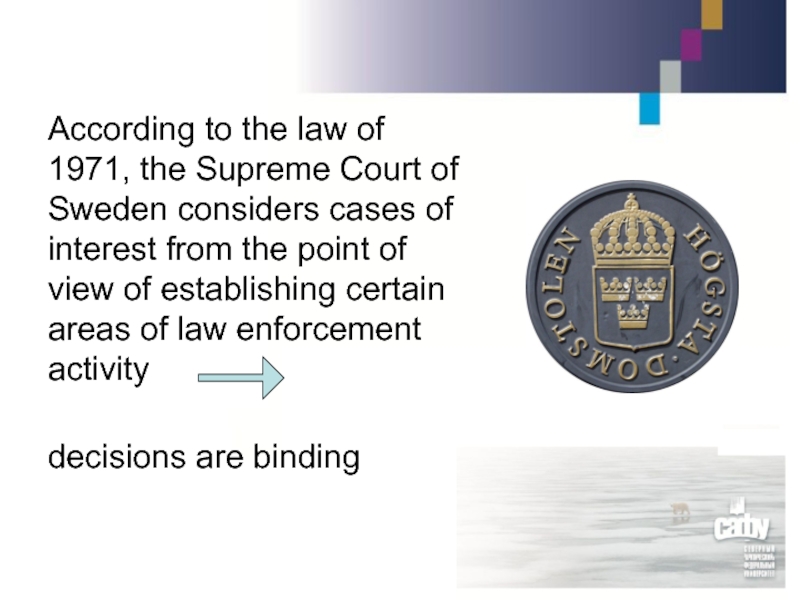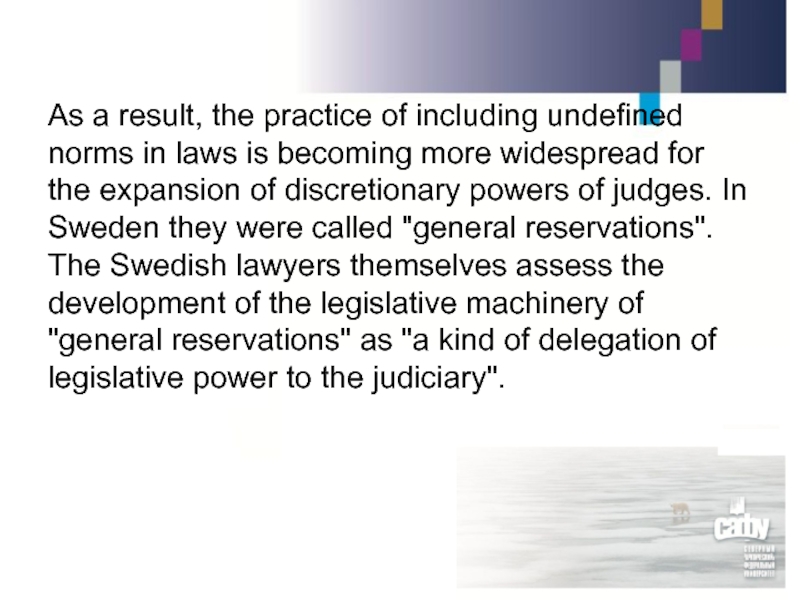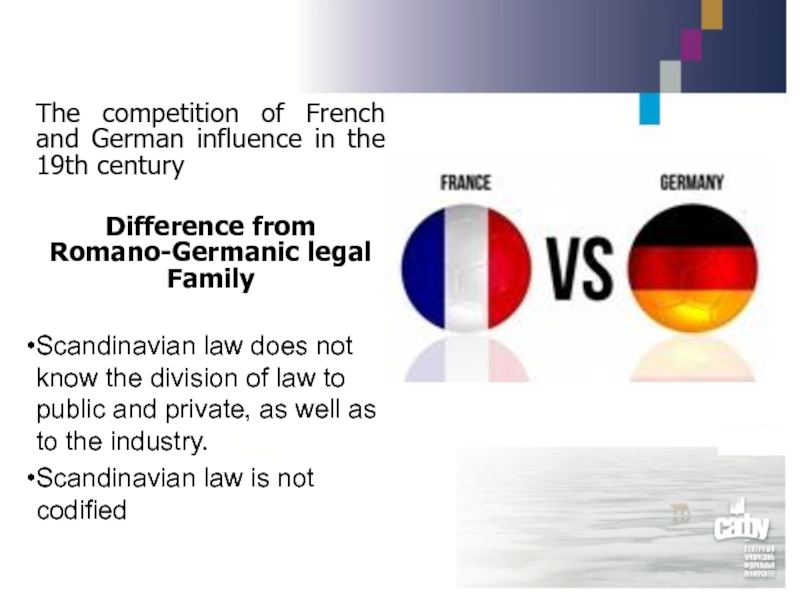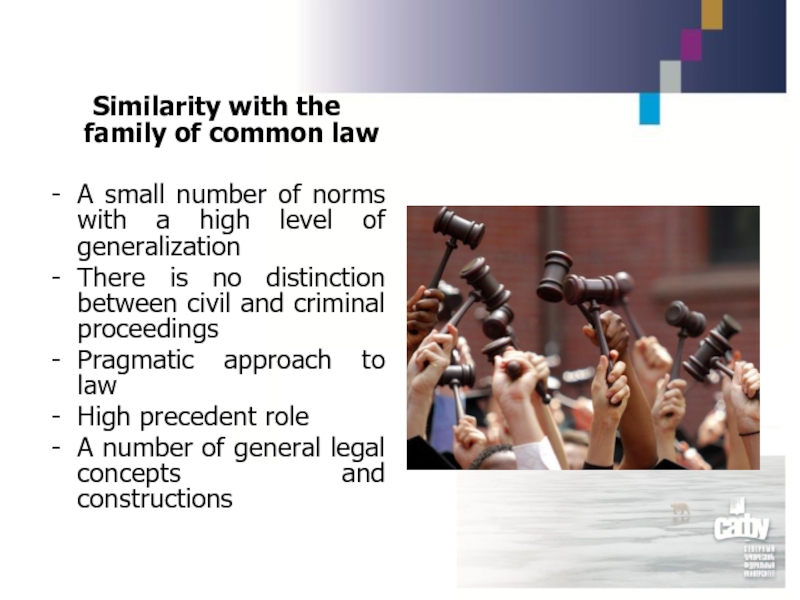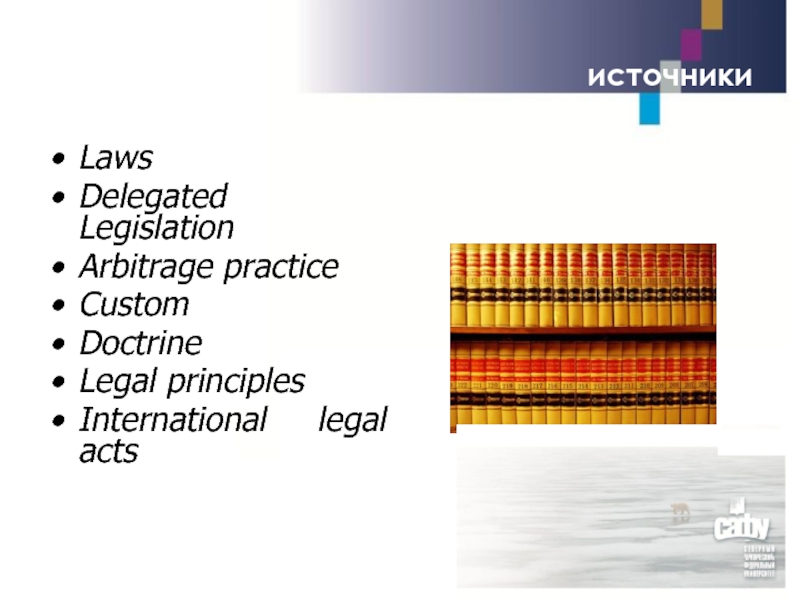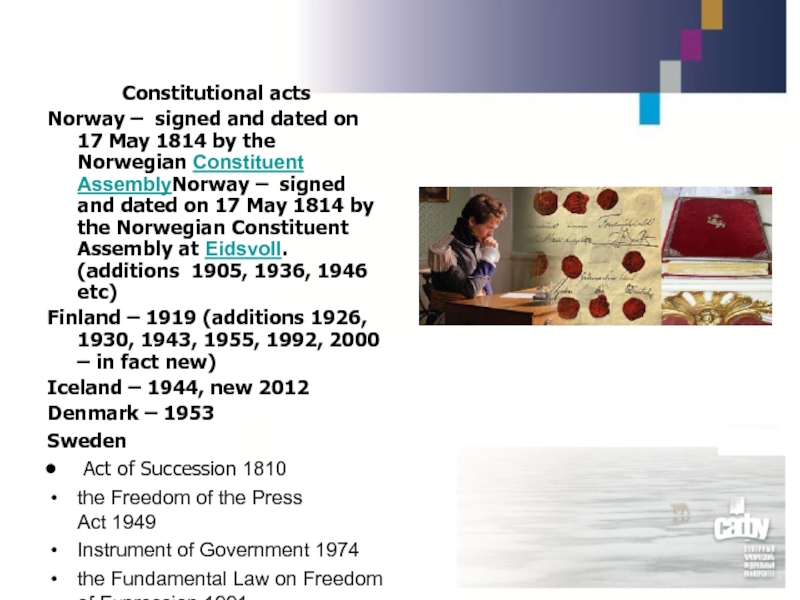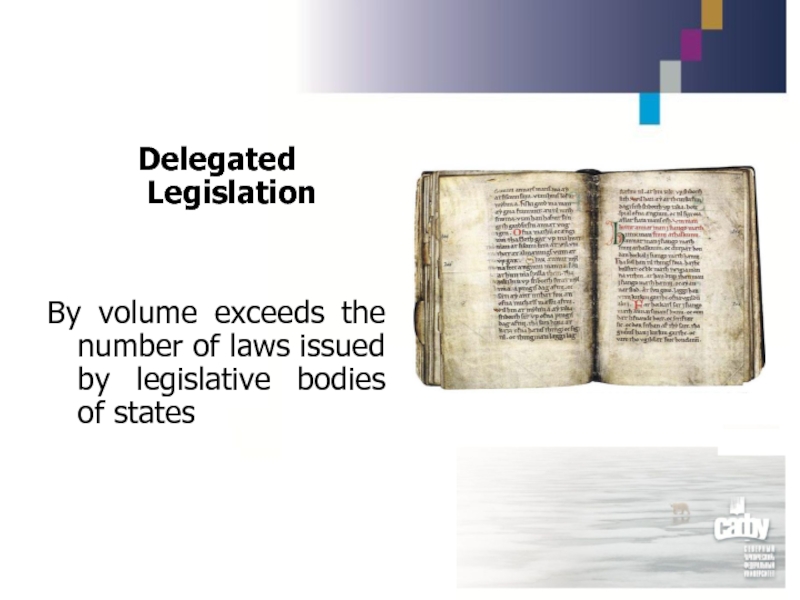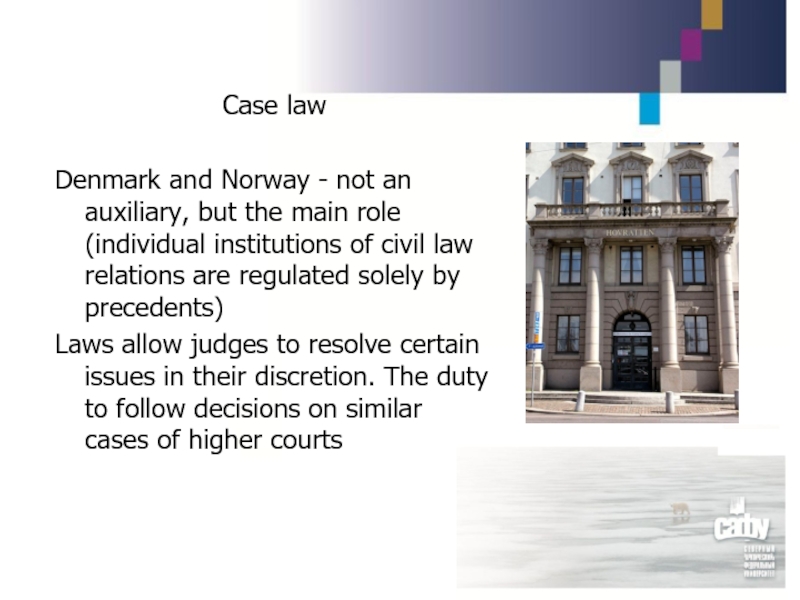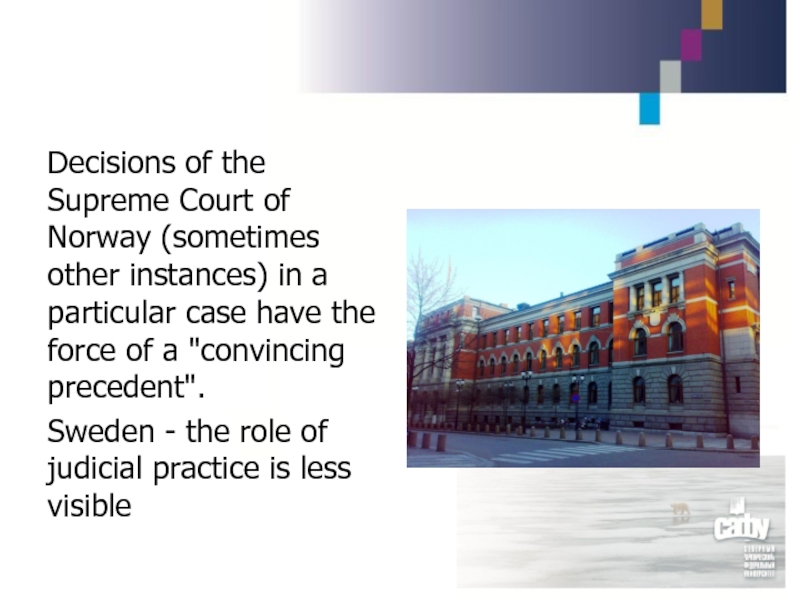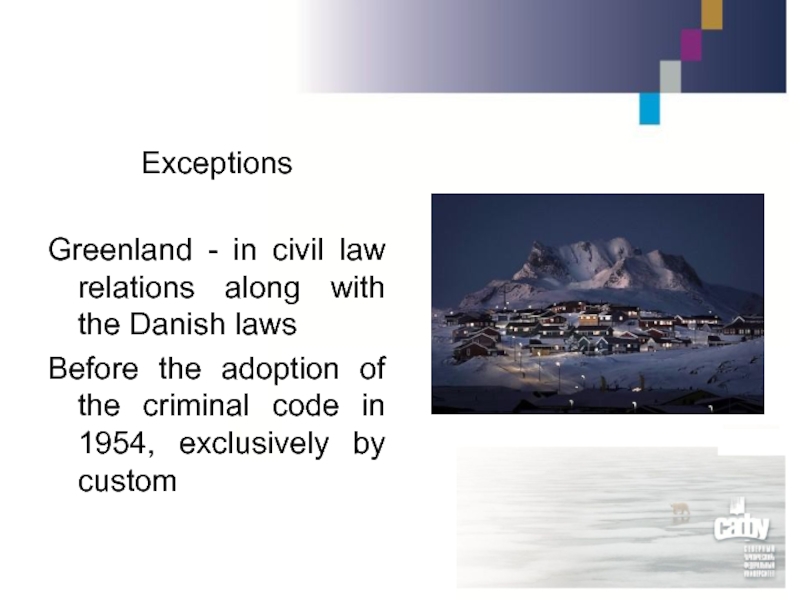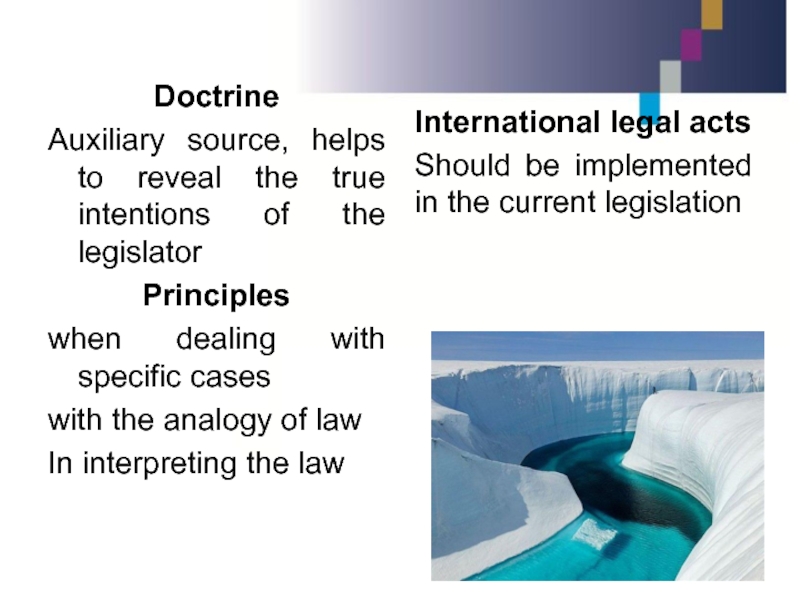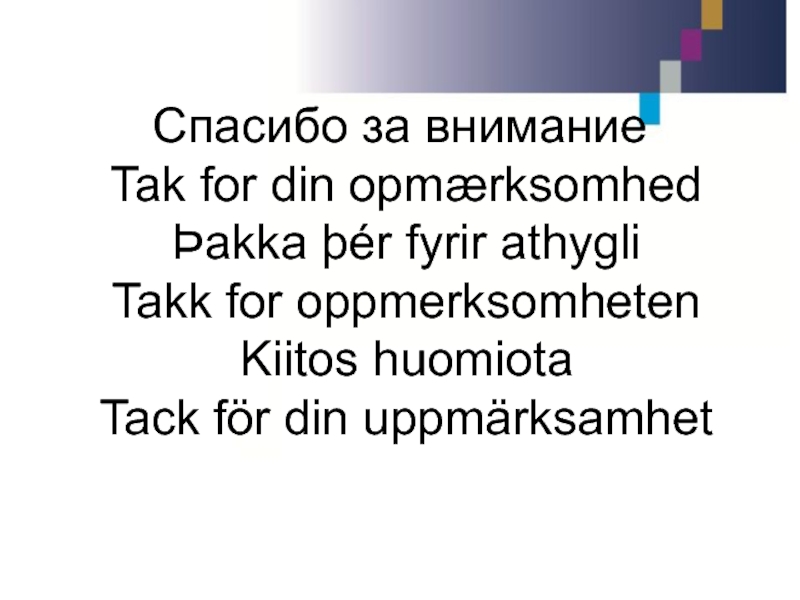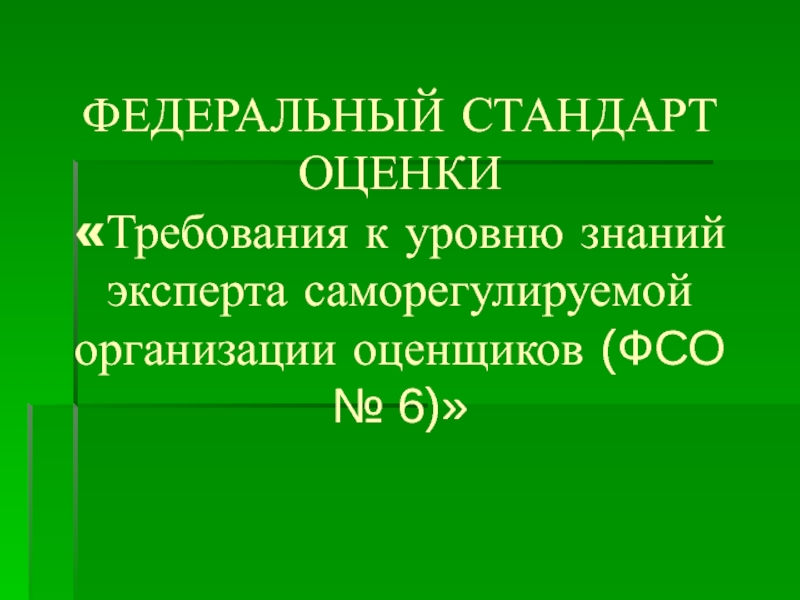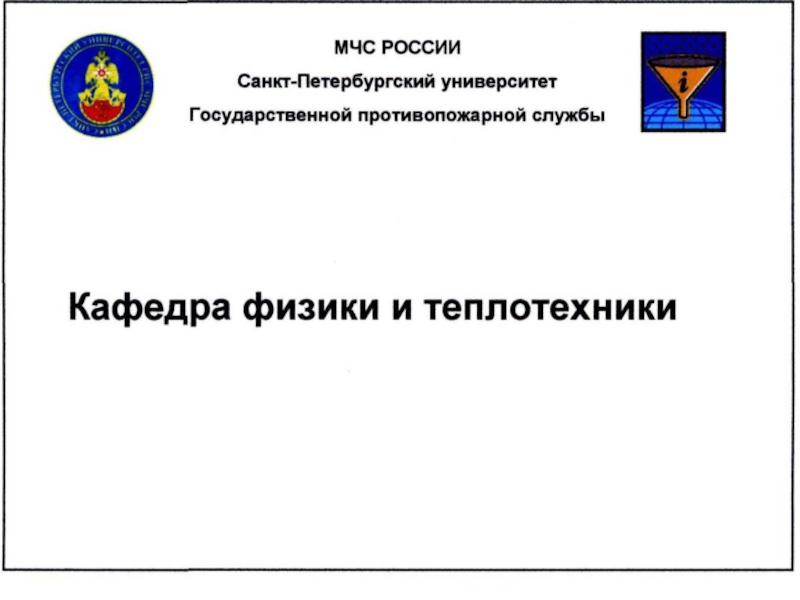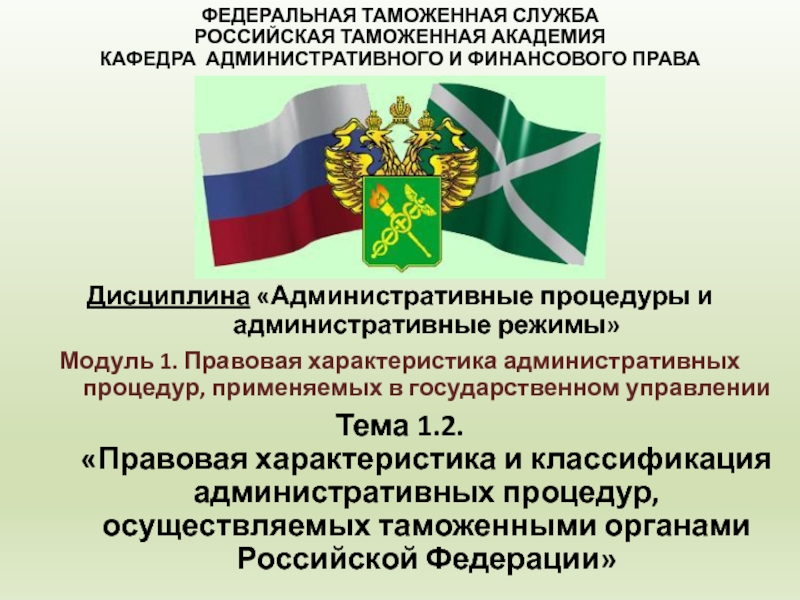- Главная
- Разное
- Дизайн
- Бизнес и предпринимательство
- Аналитика
- Образование
- Развлечения
- Красота и здоровье
- Финансы
- Государство
- Путешествия
- Спорт
- Недвижимость
- Армия
- Графика
- Культурология
- Еда и кулинария
- Лингвистика
- Английский язык
- Астрономия
- Алгебра
- Биология
- География
- Детские презентации
- Информатика
- История
- Литература
- Маркетинг
- Математика
- Медицина
- Менеджмент
- Музыка
- МХК
- Немецкий язык
- ОБЖ
- Обществознание
- Окружающий мир
- Педагогика
- Русский язык
- Технология
- Физика
- Философия
- Химия
- Шаблоны, картинки для презентаций
- Экология
- Экономика
- Юриспруденция
Legal Systems of Scandinavian Countries презентация
Содержание
- 1. Legal Systems of Scandinavian Countries
- 2. 1. The place of the Scandinavian legal
- 3. Devoted into 2
- 4. Causes of interpenetration of systems: long historical
- 5. The commonality of Scandinavian and Romano-Germanic law:
- 6. The role of the court in
- 7. According to the law of 1971, the
- 8. As a result, the practice of including
- 9. The competition of French and German influence
- 10. Similarity with the family of common law
- 11. источники Laws Delegated Legislation Arbitrage practice Custom Doctrine Legal principles International legal acts
- 12. Constitutional acts Norway – signed and dated
- 13. Delegated Legislation By volume
- 14. Case law Denmark and Norway -
- 15. Decisions of the Supreme Court of Norway
- 16. Legal custom Support role, mainly applicable in
- 17. Exceptions Greenland - in civil law
- 18. Doctrine Auxiliary source, helps to reveal the
- 19. Спасибо за внимание Tak for din
Слайд 21. The place of the Scandinavian legal family on the world
map.
2. Historical development of legal systems of Scandinavian countries.
3. Unification and harmonization of the legislation of Scandinavian countries.
4. Features of legal systems of Scandinavian countries.
5. Sources of Scandinavian law
2. Historical development of legal systems of Scandinavian countries.
3. Unification and harmonization of the legislation of Scandinavian countries.
4. Features of legal systems of Scandinavian countries.
5. Sources of Scandinavian law
Слайд 3
Devoted into 2 groups
Denmark, Norway, Iceland
developed on the
basis of almost identical in content compilations of Danish and Norwegian law, carried out in the second half of the XVII century
2. Sweden, Finland
in 1734 the law of the Swedish state was introduced, the Friedrichsham Treaty of 1809 influenced insignificantly
2. Sweden, Finland
in 1734 the law of the Swedish state was introduced, the Friedrichsham Treaty of 1809 influenced insignificantly
Слайд 4Causes of interpenetration of systems:
long historical mutual ties and ethnic closeness
of these states;
almost complete absence in all these countries of the reception of Roman law, which had a significant influence on the development of the legal systems of the countries of continental Europe;
the absence of codes that systematize individual branches of law in the same way as was done in the Romano-German legal family;
the process of unification of the law of the countries of Scandinavia, which has been going on for more than 100 years.
almost complete absence in all these countries of the reception of Roman law, which had a significant influence on the development of the legal systems of the countries of continental Europe;
the absence of codes that systematize individual branches of law in the same way as was done in the Romano-German legal family;
the process of unification of the law of the countries of Scandinavia, which has been going on for more than 100 years.
Слайд 5The commonality of Scandinavian and Romano-Germanic law:
similarity of sources of legal
regulation.
The law is the main source of law,
courts can not formally, by resolving a particular dispute, create legal norms.
The law is the main source of law,
courts can not formally, by resolving a particular dispute, create legal norms.
Слайд 6
The role of the court in the Scandinavian countries has traditionally
been very significant. A judge in the Scandinavian countries has great freedom in interpreting the provisions contained in laws and treaties.
In Sweden, the lower courts practically follow the decisions made by higher judicial bodies in almost all cases, primarily decisions of the Supreme Court, recognizing them as an authoritative statement of the law in force.
In Sweden, the lower courts practically follow the decisions made by higher judicial bodies in almost all cases, primarily decisions of the Supreme Court, recognizing them as an authoritative statement of the law in force.
Слайд 7According to the law of 1971, the Supreme Court of Sweden
considers cases of interest from the point of view of establishing certain areas of law enforcement activity
decisions are binding
decisions are binding
Слайд 8As a result, the practice of including undefined norms in laws
is becoming more widespread for the expansion of discretionary powers of judges. In Sweden they were called "general reservations". The Swedish lawyers themselves assess the development of the legislative machinery of "general reservations" as "a kind of delegation of legislative power to the judiciary".
Слайд 9The competition of French and German influence in the 19th century
Difference
from Romano-Germanic legal Family
Scandinavian law does not know the division of law to public and private, as well as to the industry.
Scandinavian law is not codified
Scandinavian law does not know the division of law to public and private, as well as to the industry.
Scandinavian law is not codified
Слайд 10Similarity with the family of common law
A small number of norms
with a high level of generalization
There is no distinction between civil and criminal proceedings
Pragmatic approach to law
High precedent role
A number of general legal concepts and constructions
There is no distinction between civil and criminal proceedings
Pragmatic approach to law
High precedent role
A number of general legal concepts and constructions
Слайд 11источники
Laws
Delegated Legislation
Arbitrage practice
Custom
Doctrine
Legal principles
International legal acts
Слайд 12Constitutional acts
Norway – signed and dated on 17 May 1814 by
the Norwegian Constituent AssemblyNorway – signed and dated on 17 May 1814 by the Norwegian Constituent Assembly at Eidsvoll. (additions 1905, 1936, 1946 etc)
Finland – 1919 (additions 1926, 1930, 1943, 1955, 1992, 2000 – in fact new)
Iceland – 1944, new 2012
Denmark – 1953
Sweden
Act of Succession 1810
the Freedom of the Press Act 1949
Instrument of Government 1974
the Fundamental Law on Freedom of Expression 1991
Finland – 1919 (additions 1926, 1930, 1943, 1955, 1992, 2000 – in fact new)
Iceland – 1944, new 2012
Denmark – 1953
Sweden
Act of Succession 1810
the Freedom of the Press Act 1949
Instrument of Government 1974
the Fundamental Law on Freedom of Expression 1991
Слайд 13
Delegated Legislation
By volume exceeds the number of laws issued by legislative
bodies of states
Слайд 14Case law
Denmark and Norway - not an auxiliary, but the main
role (individual institutions of civil law relations are regulated solely by precedents)
Laws allow judges to resolve certain issues in their discretion. The duty to follow decisions on similar cases of higher courts
Laws allow judges to resolve certain issues in their discretion. The duty to follow decisions on similar cases of higher courts
Слайд 15Decisions of the Supreme Court of Norway (sometimes other instances) in
a particular case have the force of a "convincing precedent".
Sweden - the role of judicial practice is less visible
Sweden - the role of judicial practice is less visible
Слайд 16Legal custom
Support role, mainly applicable in the field of trade and
maritime law
Often an addition to the constitutional law
Sometimes references in the text of the treaty
Often an addition to the constitutional law
Sometimes references in the text of the treaty
Слайд 17Exceptions
Greenland - in civil law relations along with the Danish laws
Before
the adoption of the criminal code in 1954, exclusively by custom
Слайд 18Doctrine
Auxiliary source, helps to reveal the true intentions of the legislator
Principles
when
dealing with specific cases
with the analogy of law
In interpreting the law
with the analogy of law
In interpreting the law
International legal acts
Should be implemented in the current legislation
Слайд 19Спасибо за внимание Tak for din opmærksomhed Þakka þér fyrir athygli
Takk for oppmerksomheten
Kiitos huomiota
Tack för din uppmärksamhet
